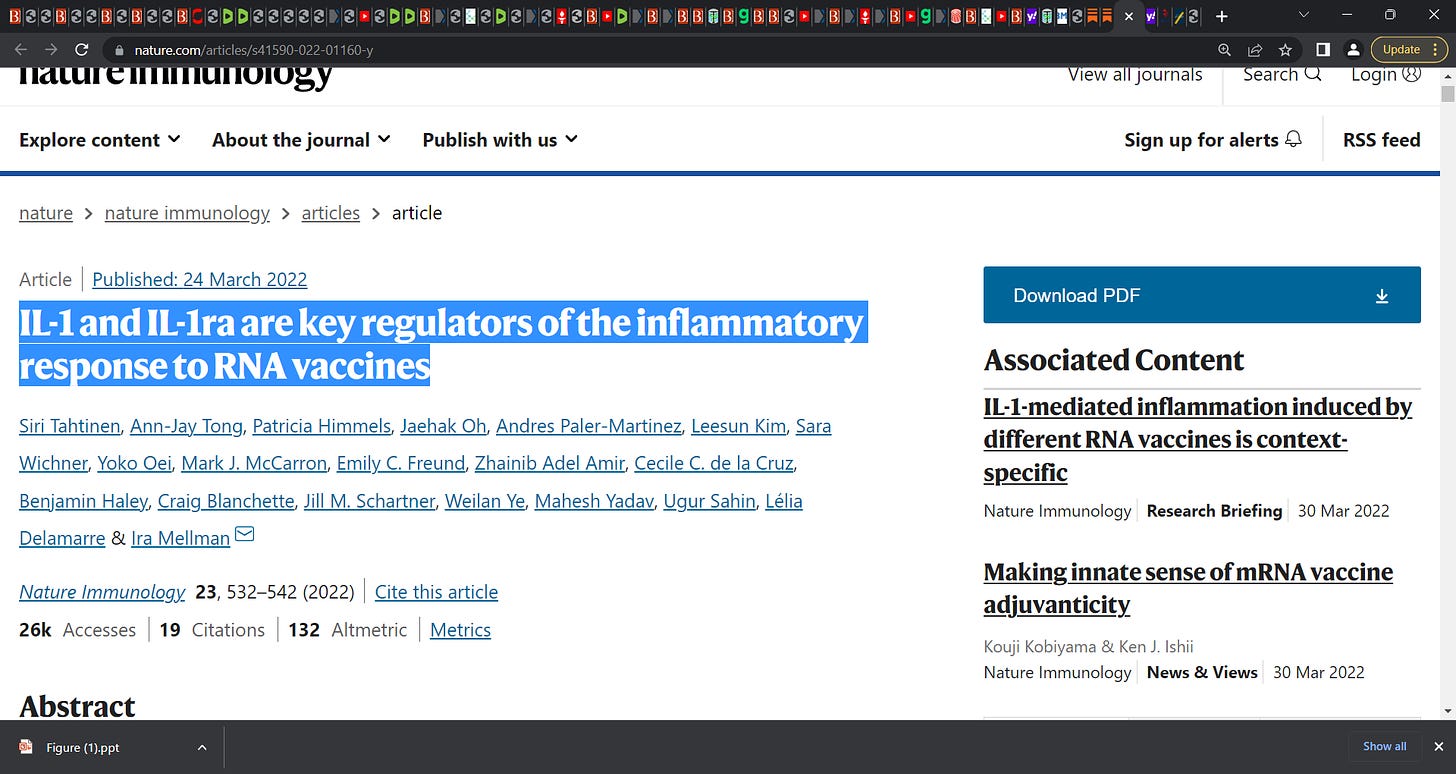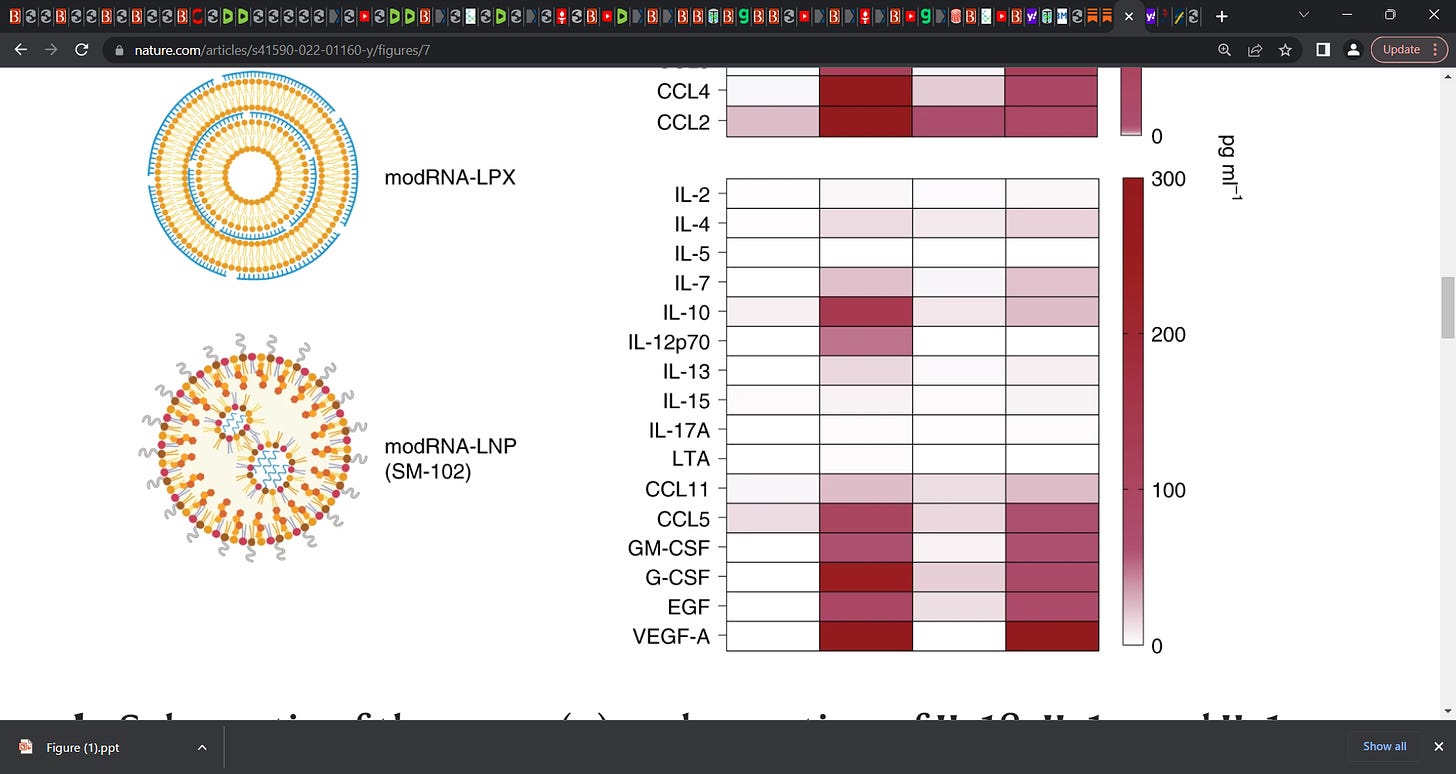Of Mice & COVID mRNA vaccines & CHIMERIC viruses: have we been misguided in interpretation of the data? Are we WRONG? Seems mice tolerate mRNA vaccines quite well relative to humans
Compared to humans, C57BL/6 & Balb/c mice are very tolerant of RNA vaccines; Pfizer, FDA may be WRONG to base bivalent vaxx decision on 8 mice data, including that the mice got COVID & 80% mice death
To say that the results are in mice, and as such not really applicable to humans may be wrong and an incorrect assumption and while I always felt this way, this study below is even more intriguing and raises many issues with the current mice studies we have on deck that is such cause for stomach upset (Boston chimeric virus study and the Pfizer bivalent booster study).
Thus have we misinterpreted the mice bivalent and Boston chimera data? Are humans at vastly greater and serious risk relative to the studied mice that did not do well in the first place based on reports? The bivalent booster study and the Boston chimera study both failed and results were catastrophic, anyway you read it. But is it even far worse? Did we miss this study that will be discussed below, showing mice do tolerate the mRNA vaccine better than humans? Is there gold nuggets in this study worth pondering?
I say not so fast to those who dismiss the Boston chimera virus study as not relevant to humans and not severe for humans etc. I say a bone-headed interpretation. Read what Dr. Bridle, Dr. McCullough, and I have written. We have taken the studies apart and the Boston study is a reckless dangerous gain-of-function study and can lead to catastrophe. It also provided a blue-print for any bad actors to go out and build such coronavirus chimeras. It was dangerous to even write that study up.
Back to this offering at hand:
I am asking the question this way, implying if mice can tolerate the mRNA vaccine (https://www.nature.com/articles/s41590-022-01160-y) and the mRNA (and likely virus) much better than humans, then the results may actually indicate devastation for humans from the bivalent booster and Boston chimeric virus, above how poorly the mice responded in the studies. In other words if this is so, then the 8 mice bivalent booster findings (where the mice got sick) used to approve the EUA and the 80% mice mortality from the Boston chimera may be terrible and the tip of the iceberg. Nothing is good about it and we may be reading the results wrong. The mice did not do well in either study, NO, the terrible performance of the mice may signal catastrophe for humans.
Is this a stretch? I argue maybe not and it is worth considering and a really bright researcher is also deserving of credit. What is the evidence? A seminal study suggests that mice can indeed cope with toxic effects of mRNA & lipid-nano particles and mRNA vaccines better than humans. Are mice mRNA vaccine studies sub-optimal and thus misleading?
The Tahtinen & Mellman study (https://www.nature.com/articles/s41590-022-01160-y) suggests 'yes' indeed, that mice can handle mRNA & LNP vaccine way better than humans and what this means is that we may be misguided in our interpretation of
i) the 8 mice bivalent study (Wuhan and BA.4/BA.5 subvariants) Pfizer used to get the FDA to approve the recent booster (note, the mice got infected and very sick and infection got to the lower distal lungs etc. and nostrils) and
ii)the Boston chimeric virus study (omicron spike and Wuhan backbone chimera) where 80% of the mice died. In short, in both situations, the results may be devastating for humans for the mice reacted terribly and thus we can extrapolate to humans. We may be mis-interpreting the studies. Mice may not be suitable when it comes to mRNA and related vaccines as a means to study the effects and existing decisions may be misguided and incorrect. This can be catastrophic for humans.
This thinking is worth considering and let us take a closer look at this study by Tahtinen and Mellman et al. published in NATURE in 2022. For it may be telling us that the FDA approved EUA for the bivalent booster may be entirely flawed and incorrect (not really understanding the response in the mice) and that the 80% mortality in the mice due to the Boston chimeric virus may dwarf an actual 100% lethality (wipeout) in humans if that chimera was let lose. In other words, as bad as the results were, it points to a terrible situation for humans. In that mice handle mRNA vaccines and lipid-nano-particles so very well that we may be missing the key message and we are being entirely misled and that the outcome can be far more catastrophic for humans.
Let us see and at first blush (Joomi), we see that:
‘The same dose of an mRNA formulated with lipoplex (cationic liposome) vaccine led to flu-like symptoms in humans but not in mice, despite the large size difference.
That vaccine induced more systemic inflammatory cytokine release in humans compared to mice.
That vaccine also led to less anti-inflammatory cytokine release in humans, compared to mice.’
SOURCE:
IL-1 and IL-1ra are key regulators of the inflammatory response to RNA vaccines
Key statements:
“In contrast to humans, C57BL/6 and Balb/c mice are remarkably tolerant to RNA vaccines and only display limited systemic cytokine release following i.v. administration of a liposomal vaccine containing unmodified RNA (RNA-LPX)1,12. Even at doses of RNA (50 µg) that are well tolerated in mice, patients exhibit transient mild-to-moderate flu-like symptoms that constrain dose exploration to a narrow range and possibly limit optimal T cell responses2,4,5”
“Given the obvious size differences, this means that RNA-LPX doses that trigger potent systemic inflammatory responses in humans are more than 1,000-fold lower than in inbred laboratory mice2”
“We investigated the ability of lipid-formulated RNA vaccines to trigger innate immunity. We uncovered the key role of IL-1 in triggering the release of other pro-inflammatory cytokines associated with cytokine release syndrome (CRS), with humans being markedly more sensitive than mice.
“Surprisingly, the reactogenicity of RNA vaccines was not necessarily due to the TLR7/8 agonism, as IL-1 release was observed using vaccines containing N1-methyl-pseudouridine-modified RNA (modRNA). Instead, the lipid components used to formulate these vaccines substituted for unmodified RNA in eliciting the IL-1 response.”
“high-dose RNA-LPX (100 μg) was well tolerated in wildtype mice without any detectable adverse events.”
“We uncovered the key role of IL-1 in triggering the release of other pro-inflammatory cytokines associated with cytokine release syndrome (CRS), with humans being markedly more sensitive than mice.”
“Unlike humans, murine leukocytes respond to RNA vaccines by upregulating anti-inflammatory IL-1ra relative to IL-1 (predominantly IL-1α), protecting mice from cytokine-mediated toxicities at >1,000-fold higher vaccine doses.”
Figure 3 d:
“To compare IL-1β versus IL-1ra release in vivo, we calculated the fold induction of systemic cytokine levels in C57BL/6 mice and in the nine patients with cancer from the phase 1b study, both groups having been treated with comparable absolute amounts of RNA-LPX. As expected based on the in vitro data, human patients treated with a tolerated dose of 25 μg showed a slight increase in induction of IL-1β over IL-1ra, whereas in mice, IL-1ra was dramatically induced relative to IL-1β (Fig. 3d). Of note, rather than normalizing RNA-LPX doses per animal weight, mice were administered identical absolute amounts of RNA-LPX as human patients (25 μg per injection).”
Figure 7 e:
‘Cytokine release from PBMCs treated with unmodified RNA-LPX, N1psU-modified RNA-LPX (modRNA-LPX) or modRNA-LNP (formulated with SM-102 lipids)…Unmodified RNA-LPX induced a robust cytokine release, whereas modRNA-LPX failed to induce IL-1β or any of its downstream cytokines (Fig. 7e). In contrast, potent cytokine release was detected with modRNA-LNP(SM-102), resulting in a similar cytokine induction profile as with RNA-LPX (Fig. 7e). These findings suggest that the reactogenicity of modified RNA is context-dependent: modRNA can be non-immunostimulatory when formulated in liposomes (LPX), induce weak immunostimulation when formulated in LNP(MC3) or initiate a potent innate response when formulated in LNP(SM-102).’
“ (Joomi’s quote) For some mRNA vaccines, both the mRNA and lipid component have to be present in order to cause inflammatory cytokine release, whereas in others, the lipid alone is sufficient. It depends on the specific lipid formulation, and whether the mRNA is “modified.”
Modifying mRNA, where the uridines are replaced with N1-methyl-pseudouridine, as was done with the COVID-19 mRNA vaccines, allows the mRNA to evade certain toll-like receptors within cells, which are proteins that detect single stranded RNA like certain types of viral RNA. mRNA vaccines that contain unmodified mRNA will stimulate these TLRs and make the cells “think” that there’s been a viral invasion. This is one of the signals that can contribute to the release of inflammatory cytokines.
The image above (Figure 7 e) shows levels of cytokines with different mRNA vaccines in human PBMCs. Wherever you see “mod” it means that the mRNA was modified.
We see that mRNA with the lipoplex lipid (RNA-LPX) leads to the release of lots of inflammatory cytokines, whereas modified mRNA with this same lipid (modRNA-LPX) does not.
That indicates that the lipoplex by itself does not cause the release of inflammatory cytokines, and indeed when they tested just the lipid alone without any mRNA, it didn’t lead to release of any inflammatory IL-1β (Fig. 1f).”
I must give huge credit to Joomi (and you support Joomi) for this nice reporting and scholarship for I have read this paper and it is highly technical and takes some re-reading but there are tremendous nuggets and findings here that raise many questions as to how we interpreted the mice studies:
Key message (Let’s be Clear):
‘The same dose of an mRNA formulated with lipoplex (cationic liposome) vaccine led to flu-like symptoms in humans but not in mice, despite the large size difference.
That vaccine induced more systemic inflammatory cytokine release in humans compared to mice.
That vaccine also led to less anti-inflammatory cytokine release in humans, compared to mice.
This cytokine pattern was also seen when comparing human blood cells with mouse blood cells in vitro.
The pattern was also seen across several different strains of lab mice.
The pattern was also seen in nonhuman primate cells in vitro.
Modifying the mRNA in the mRNA vaccine formulated with lipoplex does not induce inflammatory cytokines in human blood cells.
mRNA vaccines formulated with LNPs induced inflammatory cytokines in human blood cells, despite mRNA modification.
The LNP formulated with SM-102, which was used in the Moderna COVID-19 mRNA vaccine, was the most inflammatory out of the different lipid formulations tested.
Empty LNP with SM-102 by itself was inflammatory.’
See Joomi’s substack and please support the fine work:







Why do we get lost in the minutia of how complex the human cell is? The bottom line is the mRNA injections are not a vaccine but reprogram cellular function and it is not controllable. Degradation of the immune system of humans is declining each day that we pursue this course of injections.
I would guess that the mice are much healthier metabolically than we humans... Feed them sugar, seed oils, and other highly processed foods for a while before injecting them.